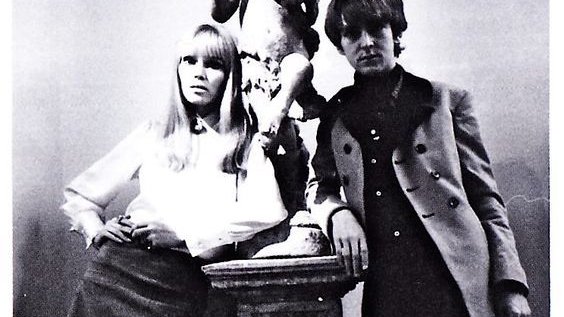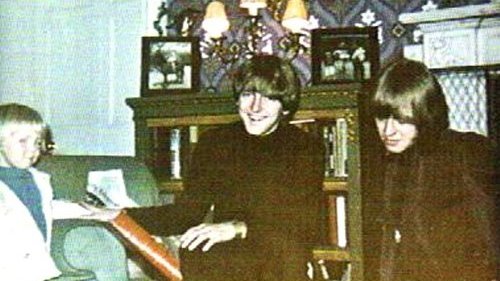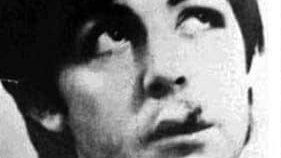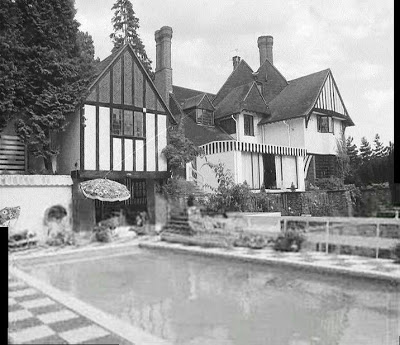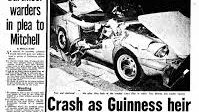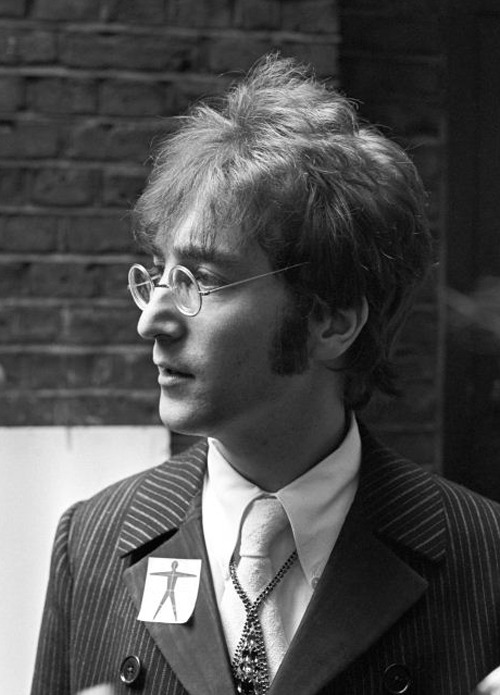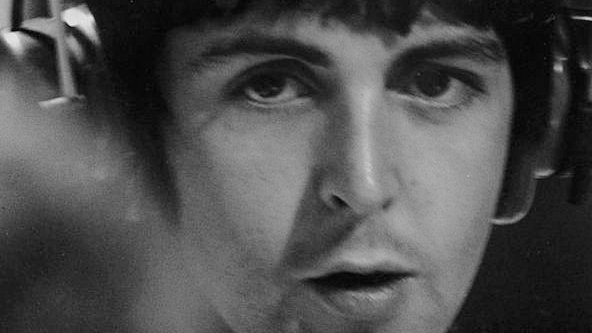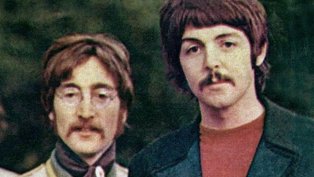"A Day in the Life" is a Lennon/McCartney collaboration. Paul McCartney wrote the hook ("I& #39;d Love to Turn You On"), the avant-garde orchestral swell AND the middle eight. John wrote the verses.
THREAD 1/24
THREAD 1/24
Here’s John in 1970: “A Day In The Life – that was something. I dug it. It was a good piece of work between Paul and me. I had the & #39;I read the news today& #39; bit, and it turned Paul on. 2/24
Now and then we really turn each other on with a bit of song, and he just said & #39;yeah& #39; – bang, bang, like that. It just sort of happened beautifully.” 3/24
Here’s George Martin: “‘What do you want this symphony orchestra to do, exactly?’ […] I really was not sure that it had been properly thought out. But Paul had been listening to a lot of avant-garde music by the likes of John Cage, Stockhausen and Luciano Berio. 4/24
He’d told John he would like to include an instrumental passage with this avant-garde feel. He had the idea to create a spiraling ascent of sound, suggesting we start the passage with all instruments on their lowest note and climbing to the highest in their own time.” 5/24
John on the lyrics: “Just as it sounds: I was reading the paper one day and noticed two stories. One was about the Guinness heir who killed himself in a car [...] On the next page was a story about 4k potholes in the streets of Blackburn, Lancashire that needed to be filled” 6/24
Despite John’s blasé recounting of the song’s inspiration, he was acutely aware of the identity of the “Guinness heir.” Tara Browne was not a friend of Lennon’s, as is often reported. Tara was a good friend of Paul (and Mike) McCartney. 7/24
Tara was the friend with whom Paul first decided to drop acid in 1965 -after ignoring relentless peer pressure from John and George to trip with the other Beatles.
Tara stayed sober that night "to stay lucid just in case Paul had a bad trip," according to Tara& #39;s wife Nicki. 8/24
Tara stayed sober that night "to stay lucid just in case Paul had a bad trip," according to Tara& #39;s wife Nicki. 8/24
Tara was also riding mopeds with Paul in Liverpool on Christmas Day 1965 when Paul (under the influence) infamously crashed and chipped his tooth. (Skipping the hospital, Paul got his lip stitched up at home without anesthetic) 9/24
For reasons unspecified, John Lennon never warmed to Tara, despite Tara’s friendliness. Tara’s wife Nicki remembers John at their house once, drunk. 10/24
Nicki guessed that perhaps John, the most middle-class of the Beatles, was harboring some personal issues with class. "I think he really sneered at people from Tara’s background," she said. 11/24
Tara was part of Paul’s circle of London friends, a loose crew that John (despite being well-liked and welcomed into) felt alienated from in his suburban mansion situated in what was dubbed “the Stockbroker belt.” 12/24
Here’s Paul: “He’d come into London and say, ‘What’ve you been doing, man, what have you been doing?’ […] I think John actually said, ‘I’m fucking jealous of you, man’ – he just needed to get out of Weybridge." 13/24
George Martin again: “It was frustrating for John seeing Paul swanning around, while he himself felt increasingly like a middle class, middle-aged man. He had an extremely low boredom threshold, at the best of times” 14/24
On December 18 1966, almost a year after Paul’s moped crash in Liverpool, Tara’s Lotus Elan collided with a van in South Kensington, London. Tara’s companion, Suki Potier, survived but Tara was killed on impact. Paul is known to have visited his grave in Ireland. 15/24
Most of this fascinating backstory is traditionally ignored in discussions of A Day in the Life. John’s haunting reaction to Tara& #39;s death ("I just had to laugh") is commonly attributed to LSD fatigue or some impersonal/generic social commentary. 16/24
So much of Beatles analysis falls into this category: Refusal to consider the interpersonal dynamics of the authors, or to apply the knowledge of the real life circumstances under which the songs were written. 17/24
The co-writing of ADITL was a bonding moment for Lennon/McCartney, as Paul corroborates: “John and I gave each other a knowing look: ‘Uh-huh, it’s a drug song. [...]& #39; ‘Yes, but at the same time, our stuff is always very ambiguous and ‘turn you on’ can be sexual so…c’mon!’ 18/24
As John and I looked at each other, a little flash went between our eyes, like ‘I’d love to turn you on,’ a recognition of what we were doing, so I thought, okay, we’ve just got to have something amazing that will illustrate that.” 19/24
Like so many Lennon/McCartney creations, A Day in the Life is a dialogue between the songwriters; a poetic, dream-like exchange of otherwise unspeakable insecurities, fears and desires. John and Paul finally tripped together on March 1967, shortly after its recording. 20/24
It is baffling and saddening how often Lennon scholars choose to view and portray John as a impartial observer of world events, doling out bloodless social commentary and actively ignore his greatest gift: writing from the heart. 21/24
Is it so unsettling to consider that John Lennon is using his real emotions for and w/ his collaborator? ADITL is a confessional lyric, as personal and revealing as anything Lennon ever wrote. In the first verse, John shows us his hurt, jealousy, shame and despair. 22/24
McCartney hears and answers him; reciprocates. (the trip had "been coming for a long time" McCartney remembered) The song plays out their journey together: exhilarating, beautiful, terrifying. 23/24

 Read on Twitter
Read on Twitter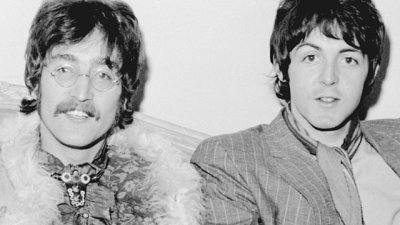
![Here’s George Martin: “‘What do you want this symphony orchestra to do, exactly?’ […] I really was not sure that it had been properly thought out. But Paul had been listening to a lot of avant-garde music by the likes of John Cage, Stockhausen and Luciano Berio. 4/24 Here’s George Martin: “‘What do you want this symphony orchestra to do, exactly?’ […] I really was not sure that it had been properly thought out. But Paul had been listening to a lot of avant-garde music by the likes of John Cage, Stockhausen and Luciano Berio. 4/24](https://pbs.twimg.com/media/ElMXaWiWoAEUhgF.jpg)
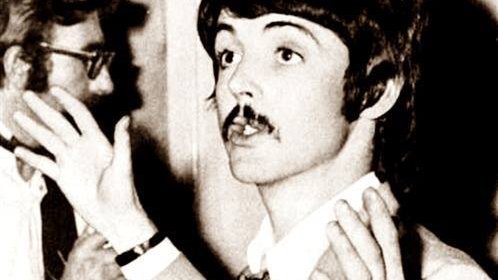
![John on the lyrics: “Just as it sounds: I was reading the paper one day and noticed two stories. One was about the Guinness heir who killed himself in a car [...] On the next page was a story about 4k potholes in the streets of Blackburn, Lancashire that needed to be filled” 6/24 John on the lyrics: “Just as it sounds: I was reading the paper one day and noticed two stories. One was about the Guinness heir who killed himself in a car [...] On the next page was a story about 4k potholes in the streets of Blackburn, Lancashire that needed to be filled” 6/24](https://pbs.twimg.com/media/ElMYRa0WkAY_LeD.jpg)
